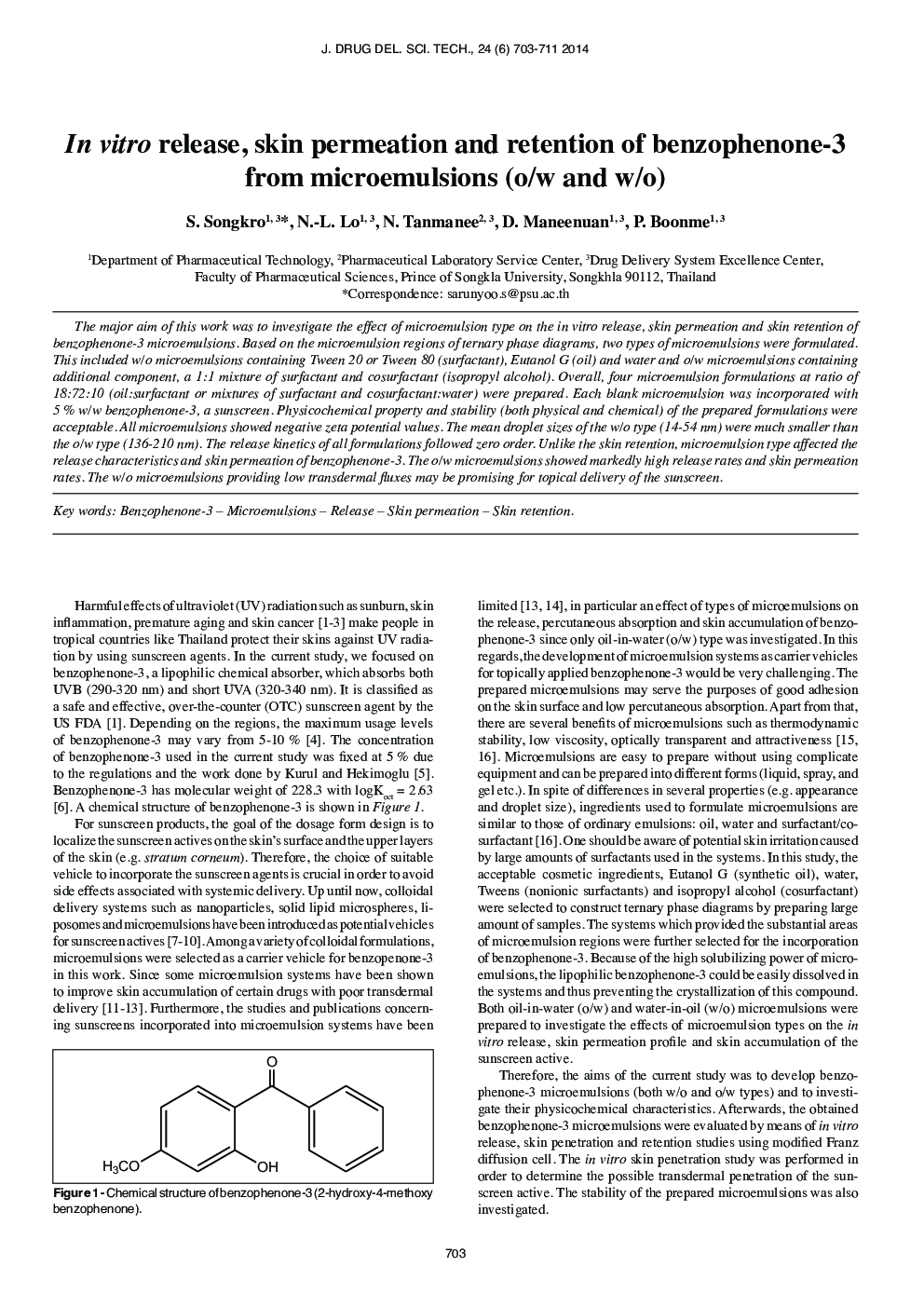| Article ID | Journal | Published Year | Pages | File Type |
|---|---|---|---|---|
| 2483288 | Journal of Drug Delivery Science and Technology | 2014 | 9 Pages |
The major aim of this work was to investigate the effect of microemulsion type on the in vitro release, skin permeation and skin retention of benzophenone-3 microemulsions. Based on the microemulsion regions of ternary phase diagrams, two types of microemulsions were formulated. This included w/o microemulsions containing Tween 20 or Tween 80 (surfactant), Eutanol G (oil) and water and o/w microemulsions containing additional component, a 1:1 mixture of surfactant and cosurfactant (isopropyl alcohol). Overall, four microemulsion formulations at ratio of 18:72:10 (oil:surfactant or mixtures of surfactant and cosurfactant:water) were prepared. Each blank microemulsion was incorporated with 5 % w/w benzophenone-3, a sunscreen. Physicochemical property and stability (both physical and chemical) of the prepared formulations were acceptable. All microemulsions showed negative zeta potential values. The mean droplet sizes of the w/o type (14–54 nm) were much smaller than the o/w type (136–210 nm). The release kinetics of all formulations followed zero order. Unlike the skin retention, microemulsion type affected the release characteristics and skin permeation of benzophenone-3. The o/w microemulsions showed markedly high release rates and skin permeation rates. The w/o microemulsions providing low transdermal fluxes may be promising for topical delivery of the sunscreen.
